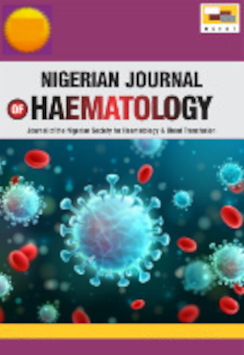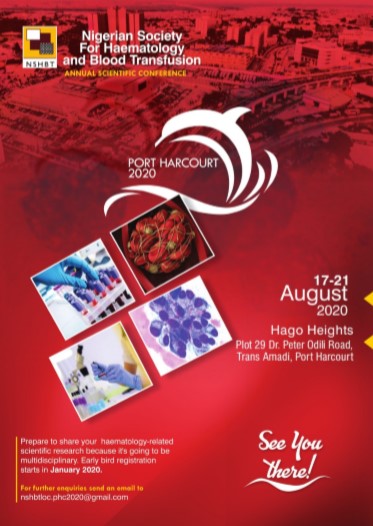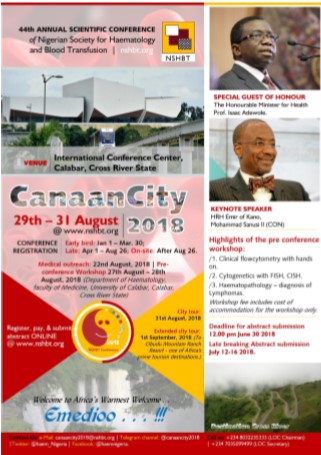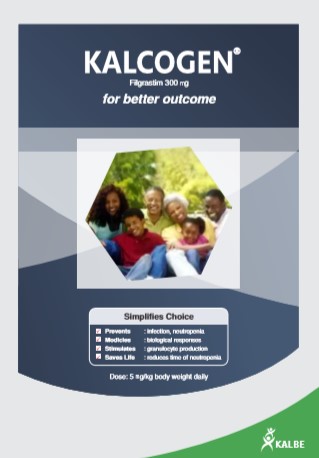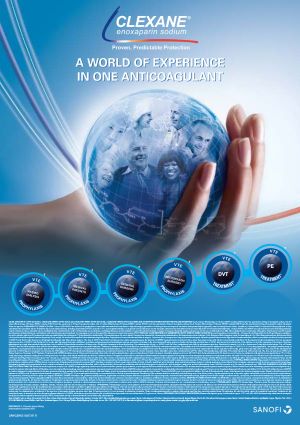Increased Awareness and Adoption of High Performance Liquid Chromatography will Impact Diagnosis of Beta-Thalassemia Gene Co-inheritance in Nigerian Population: A Case Report
Keywords:
haemoglobin A2, mean cell volume, haemoglobin phenotype, beta-thalassemiaAbstract
Background: Using haemoglobin electrophoresis for the diagnosis of sickle cell disease is fraught with limitations especially when coinheritance with beta-thalassemia gene is suspected.
Aim and Objectives: The aim of this case study is to report a 28-year old lady diagnosed as Hb SS, but whose parents had Hb AA and Hb AS phenotypes respectively.
Results: We report a case of a 28 year old lady who was diagnosed as Hb SS by cellulose acetate alkaline electrophoresis during childhood, but whose parents were known Hb AS and Hb AA respectively, using the same method. This remained a mystery in the family until the lady presented herself at age the age of 28 years to one of the authors and she was investigated. The results showed packed cell volume of 28.6%, low mean cell volume (MCV65.6fl), mean corpuscular haemoglobin (MCH-23.2pg), mean cell haemoglobin concentration (MCHC-31.0g/dl) while haemoglobin profile also showed high Hb A2 (4.7%), Hb A (7.7%), Hb S (73.1%) and Hb F (14.5%) and she was diagnosed as Hb Sbeta-thalassemia+. The parents were also invited and diagnosis of betathalassemia trait was made in the mother.
Conclusion: This report shows that the routine cellulose acetate paper in alkaline medium used in determining the Hb phenotype is not adequate to make accurate diagnosis of sickle cell disease especially when it is co-inherited with beta-thalassaemia. We recommend that HPLC should be made readily available at very low cost in this environment.
Downloads
References
Von Fintel R, Schwyzer R, Poole J, Alli NA. Compound heterozygous sickle cell disease and beta-thalassaemia: An interesting case. SAJCH. 2013; 7(2): 70-73
Hofrand AV, Moss PAH. Essential Haematology. 6th ed. Wiley-Blackwell; John Wiley & Sons, 2011:89-97
Kotila TR, Adeyemo AA, Mewoyeka OO, Shokunbi, WA. Beta thalassaemia triat in western Nigeria. African Health Sciences 2009; 9(1): 46-48.
Willcox MC. Thalassaemia in northern Liberia: A survey in the Mount Nimba area. Journal of Medical Genetics. 1975; 12:5563.
Esan GJF. The thalasaemia syndromes in Nigeria. British Journal of Haematology. 1970; 19: 47-56.
Akinbami A, Uche E, Dosunmu A, Osikomaiya B, Adediran A, Sarah JO, et al. Haemoglobin F and A2 profles among sickle cell anaemia patients in Lagos State University Teaching Hospital (LASUTH), Nigeria. Ann Trop Pathol 2018; 9: 26-31.
Schechter AN. Hemoglobin research and the origins of molecular medicine. Blood 2008;112: 3927-3938
Olufemi AE, Oluwaseyi BE, Temitope AT. Emerging spread of b-thalassaemia trait in Nigeria. Acta Haematol Polonica. 2016: 48(1); 35-39.
Brozovic M, Henthorn J. Practical Haematology In Dacie JV, Lewis SM. eds. Churchill Livingstone, Edinburgh. 1991:249-286
Cheesbrough M. District laboratory practice in Tropical Countries, Part 1, 2nd ed., Cambridge, UK: Cambridge University Press; 2000: 268–285.
Daniel, Y, Obaro, S, Dada, J, Lawson, JO, Inusa, BP. Use of HbA2 As a Discriminator for S/Beta Thalassaemia in a Nigerian Setting. Blood. 2011; 118 (21): 4206.
Inusa, BP, Daniel, Y, Lawson JO, Dada, J, Matthews, CE, Momi, S et al. Sickle cell disease screening in Northern Nigeria: The co-existence of β-thalassemia inheritance, Pediatrics and Therapeutics. 2015; 5(3), 1000262
Downloads
Published
Issue
Section
License
Copyright (c) 2023 Nigerian Journal of Haematology

This work is licensed under a Creative Commons Attribution-NonCommercial-NoDerivatives 4.0 International License.


